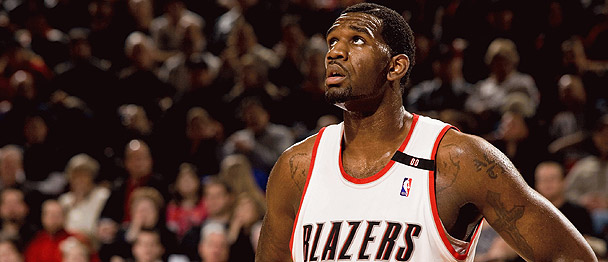
So the news broke a few weeks ago that Greg Oden, the heralded former No. 1 draft pick of the Portland Trailblazers, will miss yet another season. Three years, three major surgeries. First, it was a cartilage injury that required microfracture surgery on his right knee. Last year, he sustained a fractured patella on his left knee. Now, unrelated to the patella, is a new injury to his left knee, also requiring microfracture surgery. This guy was supposed to be the next Kevin Durant, right? Wait, my bad…same draft. That's right…the Blazers PASSED on Durant to get Oden. That's another story. Anyway, Oden was to be a star, and now folks are calling him a bust.
Flip to football, and the same story seems to be playing out for the
Detroit Lions QB Matthew Stafford. Recently, he sustained his
third shoulder injury in just 2 years. When he has played, he has shown signs of being a great NFL quarterback. But injuries seem to just get him.
We've seen this before. Looking through the past few years, names like Mark Prior, Sam Bowie, Eric Lindros, Yankees’ “can't-miss” prospect from the 90's Brien Taylor, jump out—stars who have all of the potential but just can't seem to shake the injury bug. Just when you thought they were in the clear, something else came up. Frustrating is a great word to describe their path.
Then you have the list of folks who had their career cut short by major injuries (Bo Jackson and Gayle Sayers come to mind). These, while tragic and make you also want to ask the "what it 'coulda' been" questions, are not what I want to talk about here. I am curious to know what makes some athletes more injury-prone than others. Let's go through a few reasons:
- TOUGHNESS: Great starting point. Are some athletes just not tough enough to handle it? Yes and no. There is a mental aspect of toughness that needs to be addressed. Some folks can grit it out, while others think the most minor “ouchie” is cause to sit out. If you did a major MRI, x-ray, and bone scan of every professional athlete, not one of them would come back 100% normal. Sports cause wear and tear on the body, and damage will be done. Sometimes you can push through it; sometimes you simply can't go on any longer and have to stop. But there is the physical side of it as well.
- PHYSICAL STATE: Genetically, we are all gifted differently. Some of us have the body composition to endure the rough demands of sport; some of us don't. Factor in things like joint flexibility, heredity, bone structure, muscle tightness and you have a wide range of diversity.
- PREPARATION: The way one trains and prepares can have a significant impact on injury rates. It's important to go through a regimen in anticipation of a season, both to correct imbalances caused by injuries and also to make the body stronger and faster. But I have seen training intended for performance actually cause injury. Could it be that some of the oft-injured folks mentioned above are in this category? Maybe. But the problem is that you almost always only find that out after the fact.
- EXTERNAL FACTORS: Shoes, training surfaces, climate are all examples of things that can affect the way an athlete's body responds. Again, you won't know what's causing a problem until a problem presents itself.
Specifically about Greg Oden, is there something going on in Portland? It’s real easy to sit back and point fingers at the organization, especially when you factor in
Brandon Roy’s situation.
Are they working their players too hard? Is their strength and conditioning program causing more harm than good? What about their court surface? These are all questions that beg to be answered, but until someone actually has some proof, it's all merely speculation.
I am not one to question anyone on the Blazers’ staff because I am not privy to the facts. I have great respect for medical providers for professional teams. I can say however, based on my own experience, that if there is reasonable cause for “something” to cause injuries, you have to look at it. One season of injuries is not a pattern; chalk it up as random. Some athletic trainers can look back and see a year full of injuries and the next be injury-free with no explanation. But something repeating year after year—you have to take a step back and ask the hard questions: “What is different?” “What do these injuries have in common?” “What do we need to change?”
Today's sport science allows us the use of new diagnostic tools like video analysis, strength and force output measurements, and testing methods. These tools can help us avoid injuries, or in the case of some of the athletes above, help identify things causing the injuries before they get too bad, or look for a root cause to a recurring injury pattern. It's amazing what we can detect nowadays in our training centers. I have been blessed with the opportunity to utilize tools like these to help athletes get over the issues.
I write all of this hopefully to stimulate some discussion. I also write to talk to the critical fan who will quickly dismiss an athlete as just an "injury bust." It's not like they are doing this stuff on purpose. Sometimes it's out of their control.
Athletes, you have the right to know what an organization or team’s training philosophy is all about. Ask the hard questions about injury rates over the years. Ask about the training surfaces. Ask about the strength and conditioning staff’s experience. Ask about the relationship between the strength coach and the athletic trainer (this is a BIG one…if they don’t get along, that’s not good).


